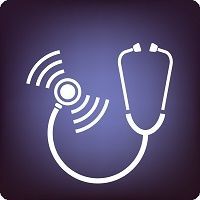Article
Telemedicine Consult Study Examines Quality, Access and Cost
Author(s):
A study taking place in California could help make the case that telemedicine can drive down the cost of health care.

The value of telemedicine consultations may get another shot in the arm if the goals of an ambitious new study are realized.
James Marcin, MD, interim chief of pediatric critical care medicine at UC Davis Children’s Hospital in Sacramento, and head of the hospital’s pediatric telemedicine program, has received a 3-year grant from the US Department of Health and Human Services to study the benefits of telemedicine consults compared with telephone consults.
“The Institute of Medicine has its triple aim of cost, quality, and access,” Marcin says. “Those are the 3 big things that people who use telemedicine say it does: increase access, improve quality, and reduce costs. Those are the hypotheses that we’re looking to evaluate.”
The Rationale
Marcin says the logic behind this study is simple. Doctors in isolated and rural emergency departments often have no backup or pediatric expertise. Telemedicine consults enable physicians to see things that they couldn’t have over the phone, and that potentially impacts quality and patient safety.
“We’ve published some work on parent satisfaction, indicating that it’s higher (with telemedicine consults),” he says. “Remote provider satisfaction, quality of care, and patient safety as it relates to medication errors—all of these things where we compare sick children receiving telemedicine consults versus telephone care, telemedicine is better.”
A federal call through the Health Resources and Services Administration, under the Office for the Advancement of Mental Health, caught Marcin’s attention.
“The Federal government is a big payer of health care, both Medicare and Medicaid, and they want to evaluate existing telemedicine emergency programs; examine whether or not they should reimburse doctors for it,” Marcin says. “We put out a proposal, and fortunately we were funded. We’re very excited about this opportunity.”
Three-pronged Approach
Marcin, who will be the study’s lead investigator, explains that specific methodologies have been developed for measuring quality of care, patient safety, and cost effectiveness. For example, he and his colleagues have been working on a methodology for the last 10 years for measuring the quality of care provided to children in an emergency room department.
“We look at the charts, and we black out the reference to the consultation type,” he says. “And there’s a systematic way of evaluating the quality of care that has been provided to children. That’s one of our outcome measures. And we think [telemedicine consults] will result in higher quality.”
The study will also utilize a cost-effectiveness model for measuring not just cost of care, but the frequency and/or appropriateness of admission and transfers from rural hospitals. Marcin explains that currently, the potential exists for a sick child to be seen in an outlying hospital that does not have pediatric expertise. The hospital is going to err on the side of safety.
“They say, ‘This kid could be sick, let’s get him out of here,’” Marcin says. “Sometimes that child is transported to us and they’re fine. It could just be a viral illness or bad infection; the kind of thing where if they came into our emergency department they might not even be admitted to the hospital.”
The study will use methodologies to examine appropriateness of admission and transport retrospectively where children have received telemedicine versus telephone. The hypothesis, Marcin says, is that there will be fewer transports of these children where telemedicine consults have been engaged.
“But the goal is not just to reduce these transports; the goal is to make them appropriate,” Marcin explains. “Some of those kids may be able to stay in their own community with an expert looking over their shoulders.”
Dollars and Sense
The study will also include an economic analysis. Factors will include personnel costs for staff being on call 24/7 and telecommunication equipment, as well as the cost of transport and hospital stays.
“What we have found in the past is that many times facilities will say, ‘Let’s just send this kid out by helicopter,’ or ‘We can send this kid by ambulance,’” Marcin says. “If you look at the costs of where a child is hospitalized, if we can keep them local, a day in our hospital is much more expensive than a critical care or community access hospital. That way we can demonstrate that this program has built-in significant cost savings.”
The study, depending on the results, could also impact the growth of telemedicine for all patients, not just pediatrics.
“Absolutely,” Marcin agrees. “I think that’s very likely. I think insurance companies have been a little reluctant to pay for [telemedicine]. But if we say to them, ‘Hey, pay for this and we’ll save you money,’ who would be leery of that?”




